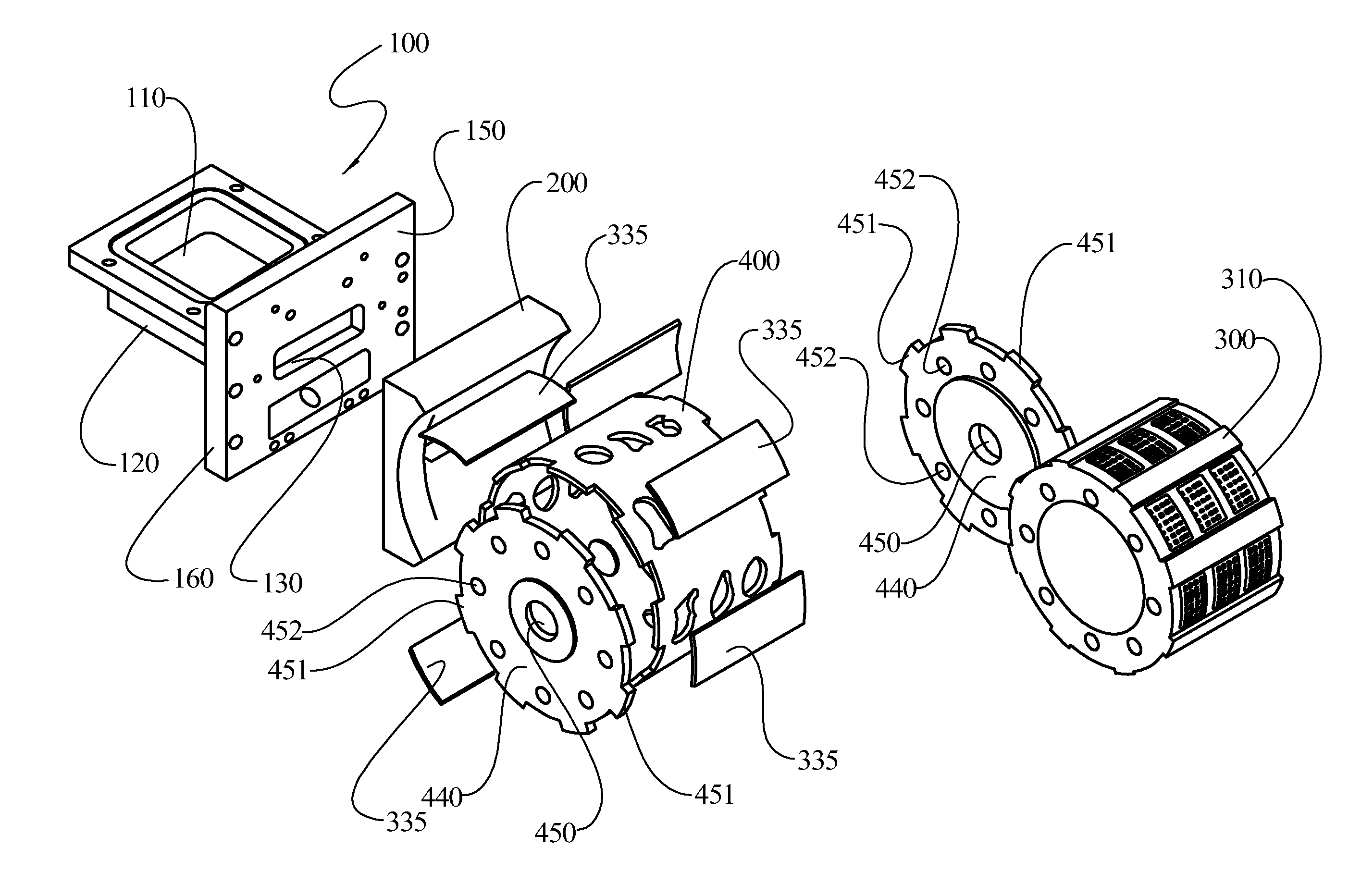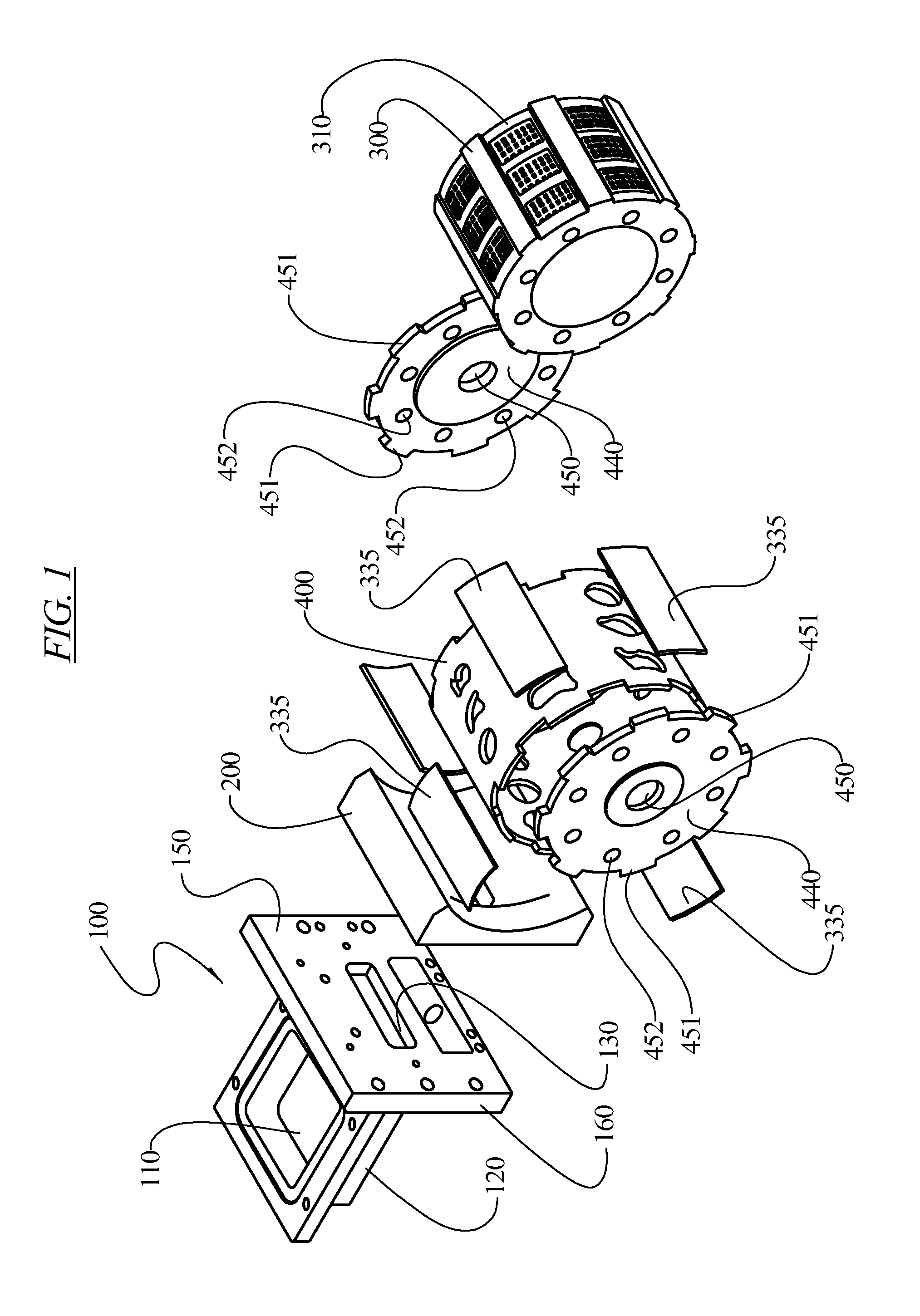Method and apparatus for rotary molding
a rotary molding and mold cavity technology, applied in the field of molding systems and methods, can solve the problems of entrapped air, difficult to ensure complete and consistent filling of mold cavities, and disadvantages of known prior art mold molding devices, and other problems, to achieve the effect of reducing the speed of high-volume production and eliminating or minimizing disadvantages
- Summary
- Abstract
- Description
- Claims
- Application Information
AI Technical Summary
Benefits of technology
Problems solved by technology
Method used
Image
Examples
Embodiment Construction
[0113]While this invention is susceptible of embodiment in many different forms, there are shown in the drawings, and will be described herein in detail, specific embodiments thereof with the understanding that the present disclosure is to be considered as an exemplification of the principles of the invention and is not intended to limit the invention to the specific embodiments illustrated.
[0114]FIG. 1 illustrates the primary components of an embodiment of a rotary molding system. The rotary molding system comprises a food feeder portion 100, an interface plate 200, a mold cylinder 300, and a mold shell 400. The food feeder portion 100 utilizes a pumping mechanism enclosed in a pump box 120 to feed pressurized food product though the feeder inlet 130 for deposition into the mold cavities. The interface plate 200 adapts the feeder portion 100 to the curvature of the rotary cylinder, which is comprised of the mold cylinder 300 and the mold shell 400.
[0115]The various components of th...
PUM
| Property | Measurement | Unit |
|---|---|---|
| angle | aaaaa | aaaaa |
| angle | aaaaa | aaaaa |
| thickness | aaaaa | aaaaa |
Abstract
Description
Claims
Application Information
 Login to View More
Login to View More - R&D
- Intellectual Property
- Life Sciences
- Materials
- Tech Scout
- Unparalleled Data Quality
- Higher Quality Content
- 60% Fewer Hallucinations
Browse by: Latest US Patents, China's latest patents, Technical Efficacy Thesaurus, Application Domain, Technology Topic, Popular Technical Reports.
© 2025 PatSnap. All rights reserved.Legal|Privacy policy|Modern Slavery Act Transparency Statement|Sitemap|About US| Contact US: help@patsnap.com



